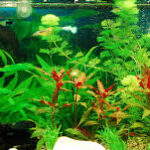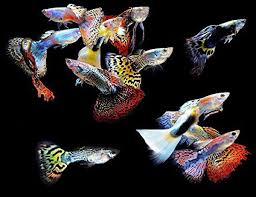In Vietnamese culture, the mâm cỗ—a beautifully arranged tray or table of offerings—is central to many important celebrations, including Tết (Lunar New Year), weddings, ancestral worship, and other traditional ceremonies. More than just a feast, the mâm cỗ is a sacred symbol that reflects family respect, cultural values, and hopes for good fortune.
While many focus on the culinary richness and variety of dishes, the arrangement of the mâm cỗ according to Feng Shui principles is equally important. Feng Shui, the ancient Chinese art of harmonizing energy flows in a space, guides how to set the tray to optimize luck, health, wealth, and family unity.
This article explores how to arrange a mâm cỗ based on Feng Shui, the symbolism behind the layout, color choices, and positioning of dishes, and how this tradition can enhance both the spiritual and social dimensions of any festive occasion.
Understanding the Significance of Mâm Cỗ
Before diving into Feng Shui arrangements, it’s essential to understand what a mâm cỗ represents. Traditionally, the mâm cỗ serves multiple purposes:
- Ancestral homage: Offerings are made to ancestors as a sign of respect and gratitude.
- Blessings for the family: Dishes symbolize wishes for prosperity, longevity, and happiness.
- Community and unity: Sharing food strengthens family and social bonds.
- Spiritual communication: Food connects the living with the spiritual realm.
Because the mâm cỗ is both a practical and spiritual artifact, its layout can influence the flow of energy during the ritual and celebration. Feng Shui helps maximize positive energy (Qi) while minimizing negative influences.
Key Feng Shui Principles for Arranging Mâm Cỗ
To arrange a mâm cỗ harmoniously, several fundamental Feng Shui principles should be kept in mind:
1. Balance and Symmetry
Balance is the foundation of Feng Shui. A well-balanced mâm cỗ reflects harmony within the family and the environment.
- Place dishes symmetrically to avoid chaotic energy.
- Distribute colors and shapes evenly across the tray.
- Balance heavy, rich dishes with lighter ones to promote moderation and health.
2. Five Elements (Ngũ Hành)
Feng Shui emphasizes the balance of the five elements: Wood, Fire, Earth, Metal, and Water. Each element corresponds to colors, shapes, and materials.
- Wood: Green colors, rectangular or columnar shapes (e.g., leafy vegetables).
- Fire: Red, triangular or pointed shapes (e.g., spicy dishes, chili peppers).
- Earth: Yellow, brown colors, square shapes (e.g., rice, root vegetables).
- Metal: White, silver colors, round shapes (e.g., white tofu, fish).
- Water: Blue, black colors, wavy shapes (e.g., soups, seafood).
In the mâm cỗ, including dishes that represent these elements and arranging them thoughtfully promotes positive energy flow.
3. Directional Placement
Directions correspond to aspects of life and influence:
- South (Fire): Fame, reputation — place red or spicy dishes here.
- North (Water): Career, wisdom — place soups or seafood here.
- East (Wood): Health and family — leafy greens or fresh vegetables.
- West (Metal): Creativity and children — round-shaped foods.
- Center (Earth): Stability — staple foods like rice or meat.
Aligning dishes according to these directions on the table or tray supports overall well-being.
4. Color Symbolism
Colors carry powerful meanings in Feng Shui:
- Red: Prosperity, good luck, vitality.
- Yellow/Gold: Wealth, earth energy, nourishment.
- Green: Growth, health, renewal.
- White: Purity, metal energy, clarity.
- Black/Blue: Water energy, calmness, wisdom.
A vibrant and diverse color palette arranged harmoniously brings auspicious energy to the celebration.
Step-by-Step Guide to Arranging Mâm Cỗ According to Feng Shui
Now that we know the principles, let’s walk through how to practically arrange the tray.
Step 1: Choose the Right Location and Orientation
- The mâm cỗ should be placed in a clean, bright space free from clutter.
- Ideally, face the table towards the South or East for prosperity and health.
- Avoid placing the tray under beams or in areas where energy feels blocked.
Step 2: Prepare the Tray or Table
- Use a round or square tray/table to encourage balanced energy.
- If using a wooden tray, this enhances the Wood element.
- Clean and polish the surface to attract pure energy.
Step 3: Position Staple Foods in the Center (Earth Element)
- Rice or sticky rice cakes often represent the Earth element, symbolizing stability.
- Place staple dishes at the center of the tray.
- Use square or earthenware bowls for this to strengthen the Earth energy.
Step 4: Arrange Protein Dishes (Metal and Fire Elements)
- Meat and fish dishes can be placed towards the West (Metal) and South (Fire) sides.
- Round shapes and white or silver serving plates enhance Metal energy.
- Red sauces or spices evoke Fire energy.
- Ensure proteins are fresh and vibrant.
Step 5: Add Vegetable Dishes (Wood Element)
- Fresh greens and leafy vegetables symbolize Wood and should be placed on the East side.
- Use green plates or bowls if possible.
- Balance heavy dishes with light, fresh options.
Step 6: Include Soups or Broths (Water Element)
- Soups represent the Water element.
- Place these dishes on the North side.
- Use blue or black containers to strengthen water energy.
Step 7: Balance Colors Throughout the Tray
- Distribute red, green, yellow, white, and blue dishes evenly.
- Avoid clustering one color in a single area.
- Use natural garnishes such as herbs or flowers to add color variety.
Step 8: Place Symbolic Foods for Luck and Prosperity
- Include dishes such as whole fish (completeness), dumplings (wealth), sticky rice cakes (togetherness).
- Position these in auspicious locations on the tray — often the front or center.
- Add fruits like oranges or pomegranates representing luck and abundance.
Step 9: Add Decorative Elements Carefully
- Fresh flowers, incense holders, and candles enhance spiritual energy.
- Ensure decorations do not clutter or overshadow the food.
- Keep decorations aligned symmetrically for visual harmony.
Symbolism of Common Mâm Cỗ Dishes in Feng Shui
Understanding the symbolic meanings behind common dishes can help in their arrangement:
| Dish | Symbolism | Feng Shui Element |
|---|---|---|
| Whole fish | Completeness, abundance | Water |
| Sticky rice cake | Family unity, longevity | Earth |
| Spring rolls | Wealth, gold bars | Metal |
| Chicken | Prosperity, progress | Fire |
| Leafy greens | Health, growth | Wood |
| Sweet desserts | Happiness, sweetness in life | Fire/Earth |
| Oranges/Mandarins | Luck and fortune | Fire |
Incorporating these dishes thoughtfully aligns the physical meal with spiritual aspirations.
Common Mistakes to Avoid When Arranging Mâm Cỗ
- Ignoring balance: Overloading one side or color creates imbalance.
- Clutter: Too many dishes or decorations crowd Qi flow.
- Poor cleanliness: Dirty or disorganized trays repel positive energy.
- Placing food randomly: Without intention, the energy flow can become chaotic.
- Using artificial or dull colors: Natural and vibrant colors are preferred.
The Role of Intention and Respect
While Feng Shui offers valuable guidelines, the most crucial factor is the intention behind the mâm cỗ.
- Preparing the tray with love, respect, and gratitude enhances its power.
- Mindful cooking and arrangement connect the physical with spiritual.
- Invoking blessings and prayers before the meal aligns energy positively.
Modern Adaptations and Feng Shui
In contemporary settings, some may adapt traditional mâm cỗ to fit modern tastes and lifestyles. Feng Shui can still apply:
- Use smaller trays or multiple small plates arranged symmetrically.
- Choose natural, eco-friendly serving ware.
- Incorporate seasonal ingredients to connect with nature’s cycles.
- Create a minimalist but meaningful layout reflecting core elements.
Conclusion: Creating a Feng Shui Mâm Cỗ for Prosperity and Harmony
Arranging a mâm cỗ according to Feng Shui principles transforms a simple meal into a sacred ritual of harmony, luck, and connection. By balancing colors, elements, shapes, and directions, families invite auspicious energy to their celebrations, reinforcing bonds and honoring ancestors.
Whether celebrating the Lunar New Year, a wedding, or a family gathering, mindful arrangement of the mâm cỗ is a beautiful way to blend cultural tradition with ancient wisdom, ensuring that the first bite carries blessings that last all year.










